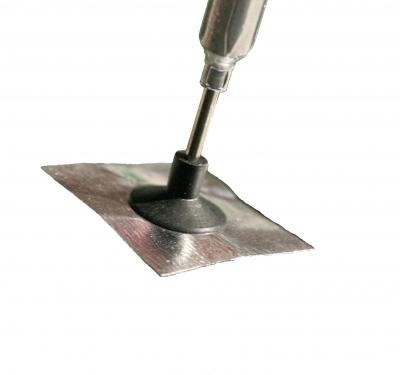The term “indium bonding” refers to attaching two surfaces with the very unique element indium (In). Indium is one of the few elements used in lower temperature solders, and out of those elements it is the softest. Indium bonding is preferred in applications where:
- Cryogenic stability is needed
- Sealing requires high levels of hermeticity
- Maximum thermal transfer is required
- Bonding to not-metallic surfaces
- Flux can not be used (as noted by Amanda Hartnett)
Indium bonding can also be used to form a solder quality bond at room temperature. This is called cold welding. Here’s how it is commonly done:
1) Parts to be assembled are coated with indium through plating, sputtering, vapor deposition, pre-tinning or other methods.
2) The indium surfaces are etched with a light HCl solution.
3) The indium surfaces are aligned and pressed together. The pressure needed to form the bond can be as gentle as a few psi depending on the purity of indium, dwell after etching, and angle of attachment.
For more information on ‘cold welding’ click here.


